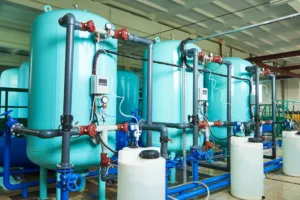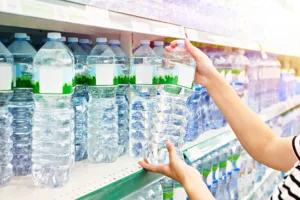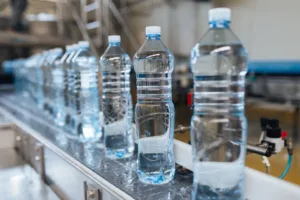Blog details
Table of Contents
Packaged Drinking Water Plant Cost Estimation: A Comprehensive Guide

The demand for packaged drinking water has surged in recent years, prompting entrepreneurs to consider venturing into the lucrative business. However, one critical aspect that often perplexes aspiring business owners is the estimation of the packaged drinking water plant’s cost. In this comprehensive guide, we will delve into the intricacies of cost estimation, considering various factors that influence costs and providing practical tips for optimization.
1. Introduction
In a world increasingly conscious of health, the demand for packaged drinking water has skyrocketed. Entrepreneurs eyeing this industry must navigate the complex landscape of cost estimation. Understanding the nuances of cost components is pivotal for making informed business decisions.
2. Factors Influencing Packaged Drinking Water Plant Costs
Capital Investment Considerations
Entrepreneurs need to assess the initial capital required, including land acquisition, construction, and equipment costs.
Location-Specific Factors
Geographical location plays a significant role, affecting land prices, utility costs, and even regulatory compliance expenses.
Technology and Equipment Costs
The choice of technology and machinery directly impacts costs, with advanced filtration systems carrying a higher price tag.
Regulatory Compliance Expenses
Staying compliant with industry regulations incurs additional costs but is essential for long-term success.
3. Understanding the Cost Estimation Process
To accurately estimate costs, a detailed breakdown of components is necessary. This involves market research, price analysis, and expert consultations for nuanced insights.
4. Comparative Analysis of Different Plant Sizes
Choosing the right plant size is crucial. We’ll explore the pros and cons of small-scale, medium-scale, and large-scale packaged drinking water plants.
5. Role of Technology in Cost Determination
Impact of Advanced Filtration Systems
Modern filtration technologies enhance water quality but may increase initial costs.
Automation and Its Effect on Costs
Automation streamlines processes but requires significant upfront investment.
Energy-Efficient Solutions
Investing in energy-efficient solutions can lead to long-term cost savings.
6. Evaluating Operational Costs
Regular Maintenance Expenses
Routine maintenance is essential for optimal plant performance, incurring ongoing costs.
Employee Wages and Training Costs
Skilled staff is vital, but their wages contribute to operational expenses.
Utility and Resource Expenses
Water, electricity, and other resources contribute to the day-to-day running costs.
7. Tips for Cost Optimization
Entrepreneurs can optimize costs through efficient resource utilization, negotiating with suppliers, and implementing sustainable practices.
8. Real-life Case Studies
Examining successful cost management cases provides practical insights and strategies for entrepreneurs.
9. Future Trends in Packaged Drinking Water Plant Costs
Anticipating technological advancements and industry changes is essential for making future-proof business decisions.
10. Addressing Common Misconceptions
Clearing misconceptions about cost estimation fosters a more accurate understanding of the financial landscape.
11. Ensuring Regulatory Compliance
Adapting to regulatory changes is a constant challenge but a necessary aspect of the industry.
12. Industry Experts’ Insights
Gaining insights from industry experts sheds light on challenges and innovative solutions in cost estimation.
13. Environmental Considerations in Cost Estimation
Balancing sustainability with costs is crucial, and we explore eco-friendly practices within the industry.
14. Navigating Challenges in Cost Prediction
Acknowledging and navigating unforeseen challenges is crucial for realistic cost prediction.
15. Conclusion
In conclusion, estimating packaged drinking water plant costs is a multifaceted process. Entrepreneurs must navigate various factors, from technology choices to operational expenses, to ensure a sustainable and profitable venture.
Frequently Asked Questions (FAQs):
Q: Is it possible to cut costs without compromising on the quality of water produced?
- A: Yes, by adopting efficient technologies and optimizing operational processes, it’s possible to balance cost-effectiveness with high-quality water production.
Q: How frequently should a cost estimation be updated in this industry?
- A: Regular updates, at least annually, are recommended to account for changing market conditions and regulatory requirements.
Q: Are there government incentives available for entrepreneurs entering the packaged drinking water industry?
- A: Depending on the region, some governments offer incentives and subsidies to encourage investments in water purification and bottling.
Q: How do advancements in technology impact the long-term costs of operating a water purification plant?
- A: While initial costs may increase with advanced technology, long-term operational efficiency often leads to cost savings over time.
Q: What role does branding play in the overall cost estimation process for a packaged drinking water plant?
- A: Building a strong brand can impact marketing costs but is essential for establishing trust and gaining a competitive edge in the market.
Recent Posts


Packaged Drinking Water Plant Cost Estimation: A Comprehensive Guide

Quenching Thirst and Harvesting Success: A Comprehensive Guide to Launching Your Drinking Water Supply Plant

5 Packaging Options for Package Drinking Water Manufacturing: A Comprehensive Guide

Fizzing with Success: How to Launch Your Own Carbonated Soft Drink Line

sing up our newsletter
Sign up today for hints, tips and the latest Industry news, insights - plus exclusive special offers.

